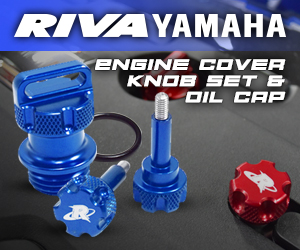
On November 9th at the EICMA Motorcycle Show, Kawasaki Motors announced a new commitment to cutting edge carbon-neutral technologies while unveiling an experimental engine that runs on compressed gaseous hydrogen and direct injection.
Based on the Ninja H2’s 998cc 4-cylinder two speed centrifugally-supercharged powerplant producing 310-horsepower @ 14,000rpm, this new hydrogen engine was conceptualized on the Ninja H2 and Teryx KRX 1000 side-by-side platforms.
Mr. Hiroshi Ito, the President of Kawasaki Motors, also revealed a new HEV or hybrid electric vehicle prototype which will be able to run on both an internal combustion engine (ICE) and an electric motor. Kawasaki also unveiled a Ninja-styled BEV or battery electric vehicle that is planned to hit the US market in late 2023.
While no specific announcements were made about Kawasaki’s watercraft division, these carbon-neutral technologies give watercraft enthusiast a glimpse of what might be in store for the future line of Kawasaki of JetSkis.

Read the full press release below:
Foothill Ranch, Calif. (November 9, 2022) – During the 2022 EICMA Motorcycle Show in Milan, President of Kawasaki Motors Corporation, Mr. Hiroshi Ito, unveiled a range of pre-production and prototype Kawasaki models and announced Kawasaki’s company-wide vision focused on Carbon Neutrality.
Earlier this year, Kawasaki announced its first electric model with the Kawasaki Elektrode™ electric balance bike for kids aged 3-8, which are arriving in dealerships this month. The next battery electric Z family machine was first shown as a prototype at Intermot, only for Mr. Ito to unveil a Ninja style machine with the same dual battery power. Both Z and Ninja battery electric vehicles (BEV) will look to be available later next year in the US market.
Highlighting Kawasaki research and development into other innovative vehicle types, Mr. Ito also previewed Kawasaki’s first ever Hybrid electric vehicle (HEV) in prototype form. The HEV motorcycle will be able to quickly and easily switch between its internal combustion engine (ICE) and electric power, the HEV machine is currently set to be available in 2024.
Demonstrating Kawasaki’s full breadth of carbon neutral models, an experimental hydrogen powered display engine based on the Supercharged Ninja H2® using direct injection and compressed gaseous hydrogen was shown. This hydrogen engine has been shown as a concept Ninja H2 platform as well as shown inserted into the chassis of a Teryx KRX® 1000 side x side.
While underlining Kawasaki’s commitment to internal combustion engines and research into future fuel types, Mr. Ito also unveiled a new symbol headlining the new Go with Green Power initiative with its goal of achieving carbon neutrality for Kawasaki within a strategic timeframe.
Amidst so many attention-grabbing prototype and pre-production models, Mr. Ito additionally clarified that across the next two model years 2024 to 2025, Kawasaki plans to also introduce approximately 30 internal combustion engine motorcycle models globally.
The sentiment that Mr. Ito left the media audience with at EICMA was that Kawasaki will continue to provide products and services that meet the needs of its customers and society by harnessing advances in current vehicle technology and via new, environmentally friendly products that are carbon neutral.







